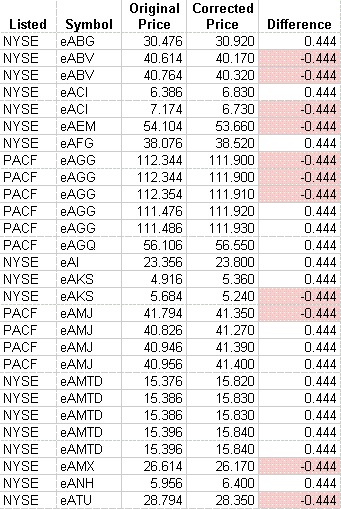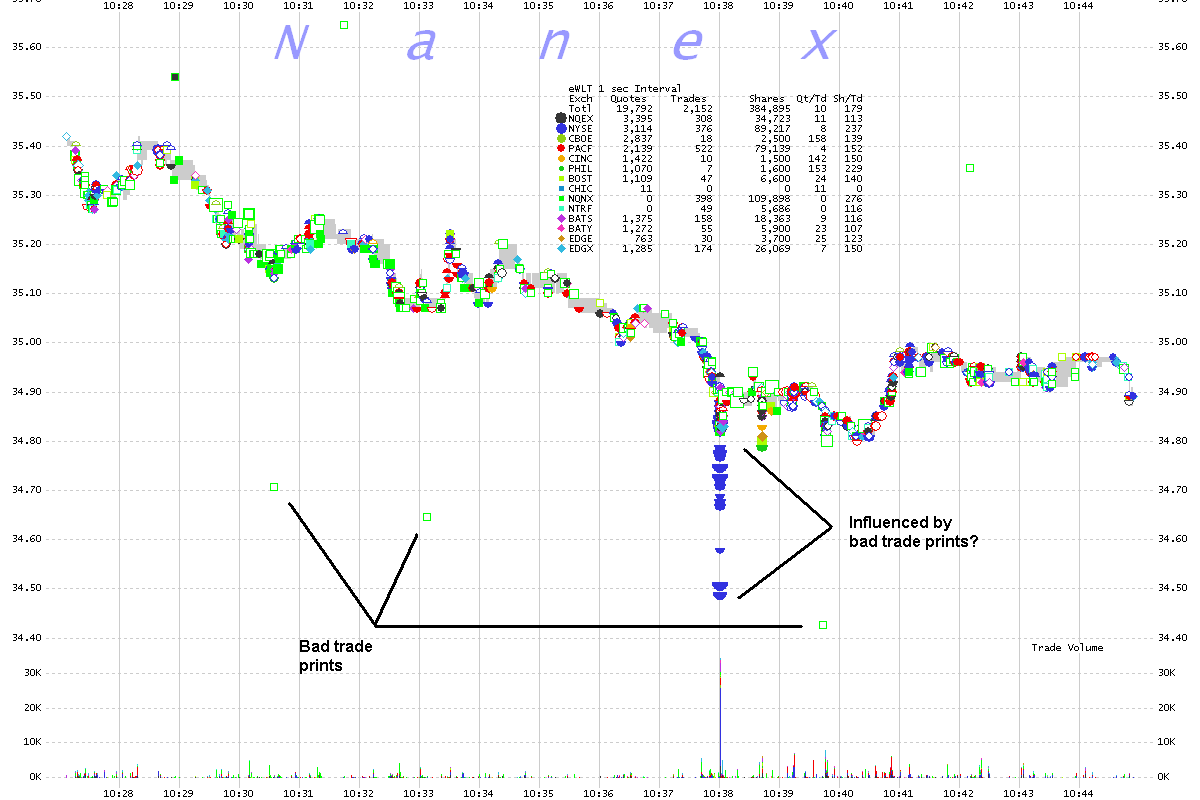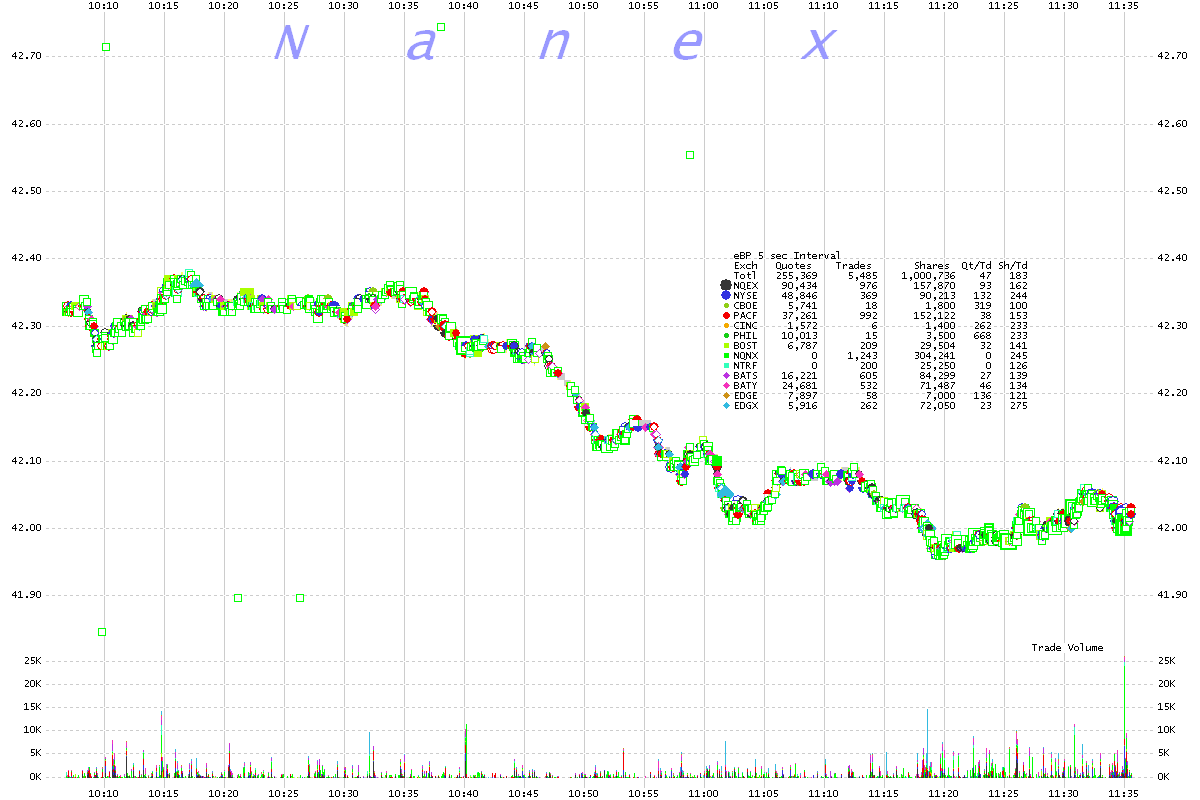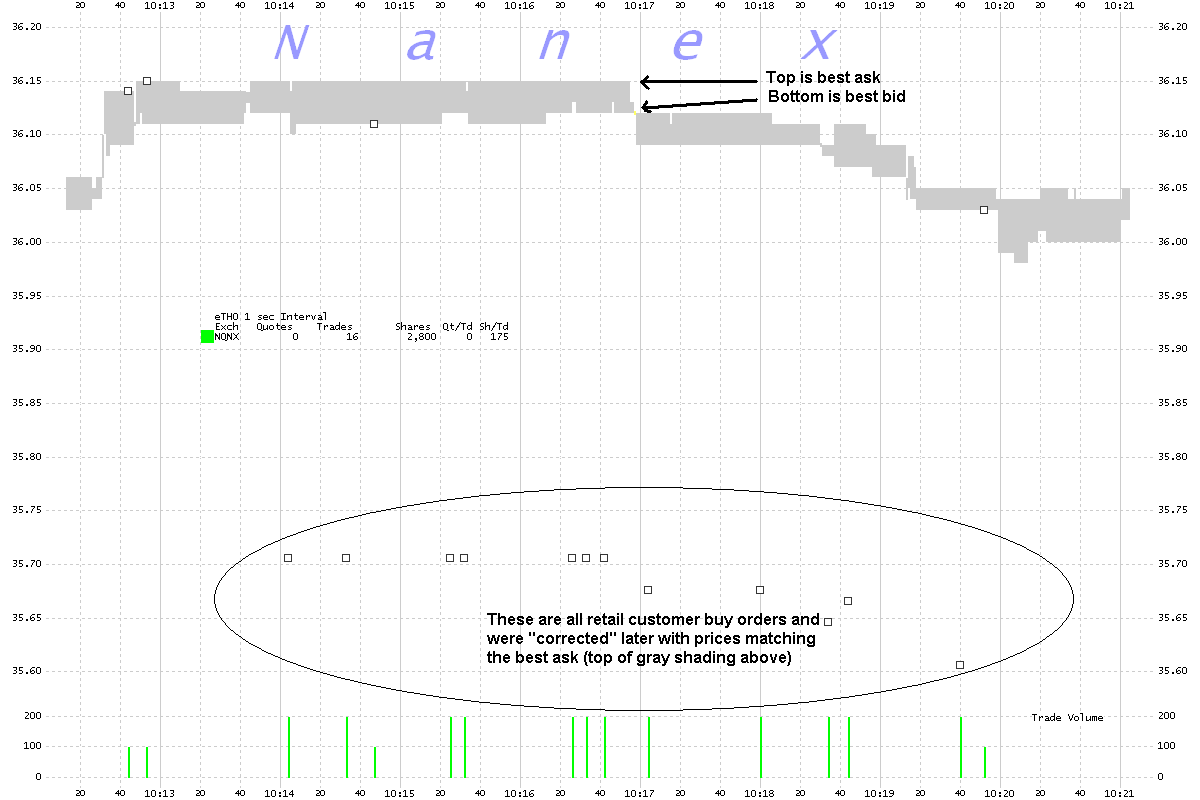Nanex Research

Nanex ~ 09-Oct-2012 ~ The Mini Knight
On October 9, 2012 between 10:02:20 and 11:01:15, there were at least 449 bad prints
in 253 stocks (view in
google docs, or
download it) which caused price spikes on charts. All bad trade prints were from NqTRF (dark pools) and ended in 0.xx40 or 0.xx60. At the end of the day, 437 bad trades were corrected with new prices, and 12 trades
were outright canceled.
Almost all of the corrected trades have new prices that differ from the original price
by $0.444 which is bizarre. Also puzzling, none of the new corrected prices are sub-penny
prints, but all of the original bad prices were.
Finally, trades that spiked higher had prices ending with the digit "4", while trades
that spiked lower had prices ending with the digit "6".
Update: 11-Oct-2012 ~ Mystery Solved
It appears that an internalizer entered a price improvement
offset of 0.444 instead of 0.004, because the bad trade prices closely track the NBBO, but are offset by that
amount (see charts 5 and 6). From matching the bad trades to the NBBO, we've determined:
- Prices that spiked lower were from retail investor buy orders.
- Prices that spiked higher were from retail investor sell orders.
One of the first times we've ever seen
the retail investor get a great deal! Sadly, it didn't last, as the trades were either
canceled or corrected with new prices (it is possible that the internalizer corrected
the prices to clean up the tape, but let the retail investor keep the better price).
This raises a few important questions:
- Why did it take an hour for someone to find and correct this problem?
- What if a larger number were entered, such as 4.44? Is this
how close Wall Street walks on the edge of disaster?
- The trades that originally were below the market were corrected to the National
Best Ask prices (and the trades above, corrected to National Best Bid prices). Which
means that the retail investor originally received a better price than the market
- $0.444 per share better price. Why were these trades corrected (giving the investor
a worse price) even though prices didn't move outside of the clearly erroneous
price
bands?
- When we looked closely at some of the corrected prices, a few appear to have been
corrected outside of the NBBO, meaning the investor received a penny worse than
they should have! How were the corrected prices determined?
Here are a few of the corrections: (view all corrections in
google docs, or
downdoad it).

1. WLT 1 second interval chart showing trades color coded by exchange.
Was the sudden price drop on NYSE (blue dots) influenced by the bad trade prints?

2. BP 5 second interval chart showing trades color coded by exchange.
We now know that the price spikes near the top were from retail sell orders, and the
spikes near the bottom were retail buy orders.

3. Same chart as above, but connecting trades to help you see the bad prints.
We now know that the price spikes near the top were from retail sell orders, and the
spikes near the bottom were retail buy orders.

4. LVS Tick Chart

5. THO 1 second interval chart showing NSX (FINRA/Dark Pool trades) and the NBBO
Note how the bad trades track the NBBO.

6. PDP 2 second interval chart showing NSX (FINRA/Dark Pool trades) and the NBBO
Note how the bad trades track the NBBO.

Nanex Research
Inquiries: pr@nanex.net







